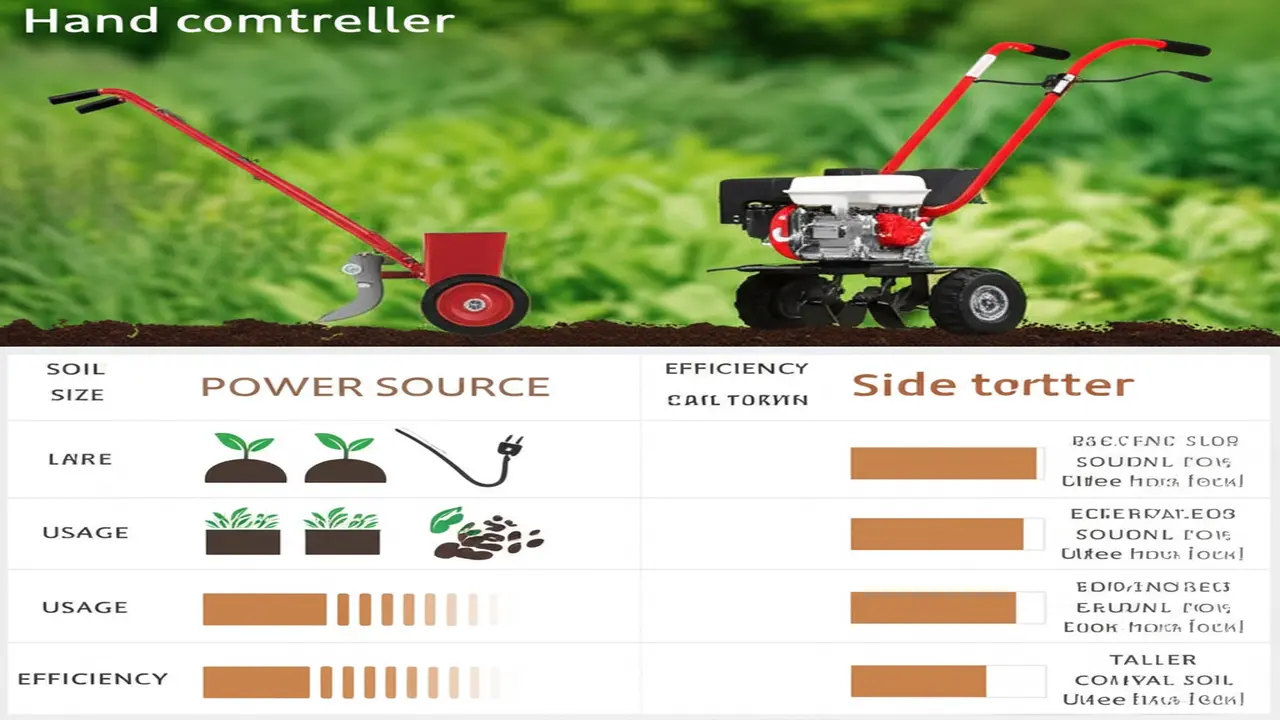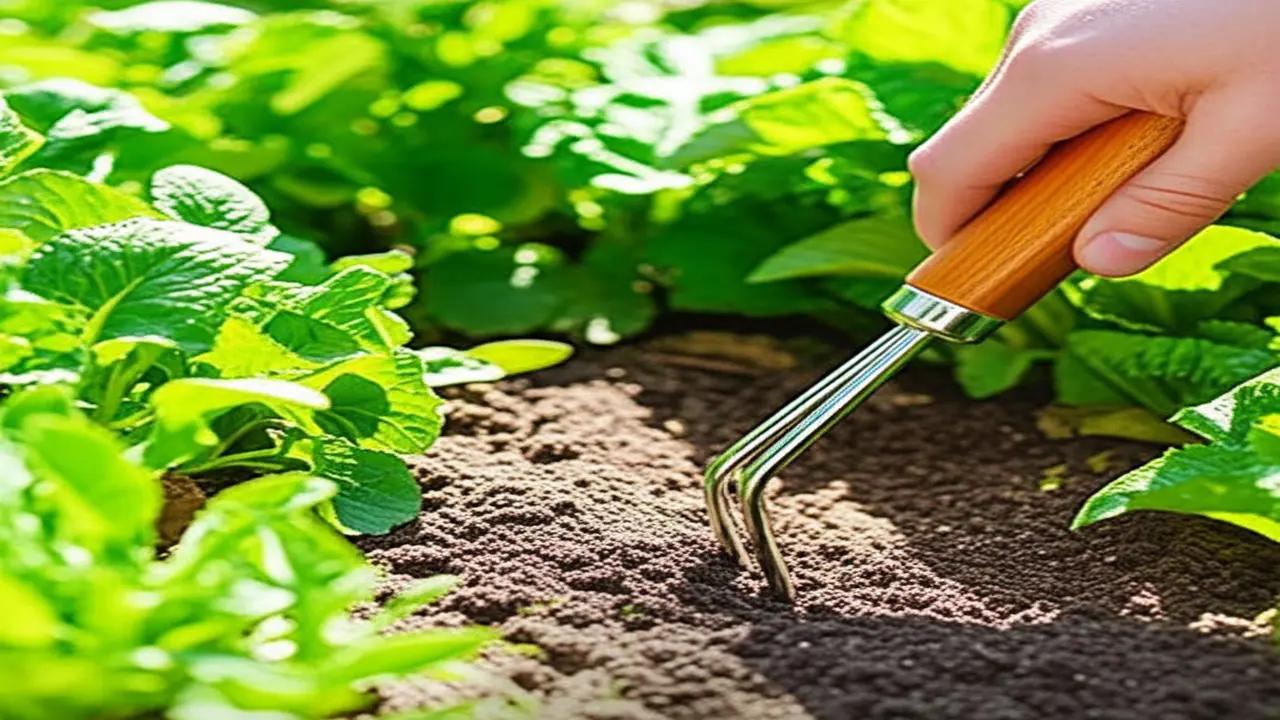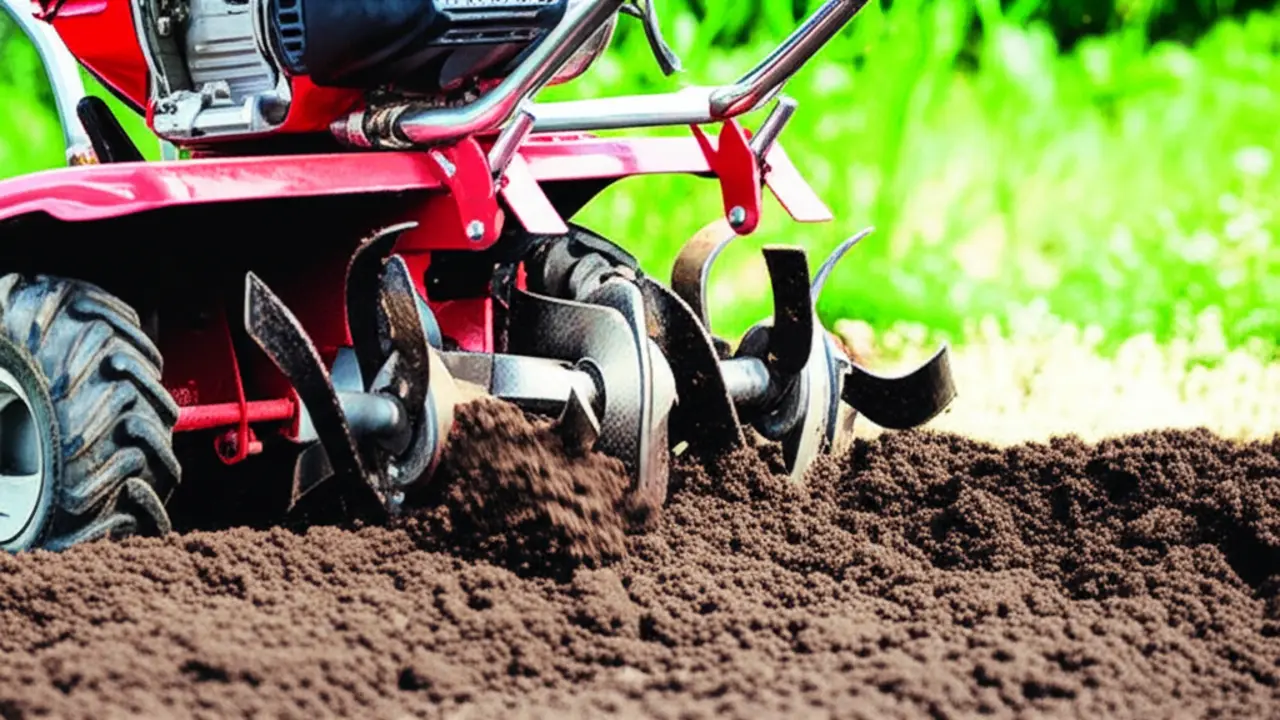Hand Cultivator vs Tiller: Choosing the Best Garden Tool in 2025
In the realm of gardening, selecting the right tool for your workspace is crucial. Whether you are tending to a small flower bed or breaking ground for a large vegetable patch, the choice between a hand cultivator vs tiller can significantly impact the ease and success of your garden soil preparation. This article offers an insightful, detailed comparison of these two vital garden tools to guide you in making an informed choice tailored to your garden’s needs.
Understanding Your Garden’s Needs
The fundamental question facing gardeners is often: which tool suits their garden best — a hand cultivator or a tiller? This depends largely on the garden’s size, soil condition, and the specific tasks at hand. Each instrument serves distinct purposes: hand cultivators provide precision and control for smaller jobs, while tillers offer power and efficiency for turning over larger or tougher plots.
In this guide, we examine these tools side-by-side and dive deeper into their mechanics, applications, advantages, and limitations. This overview will assist both novice and seasoned gardeners in making a selection that best matches their gardening projects.
Hand Cultivator vs. Tiller: Quick Reference Comparison Table
To quickly grasp the primary differences and attributes of hand cultivators and tillers, consult the following comparison table, which highlights critical features including power source, ideal garden size, soil compatibility, depth of cultivation, and more.

The Hand Cultivator: Precision and Control for Smaller Tasks
What is a Hand Cultivator?
A hand cultivator is a garden tool designed for breaking up and aerating soil primarily in small areas. It comes in both manual and powered models. Manual hand cultivators usually have claw-shaped tines used to loosen the soil surface, remove weeds, and mix in organic amendments. Powered versions, often electric or small gas-powered, offer additional convenience, blurring the line between cultivators and mini-tillers.
Types of Hand Cultivators:
Manual hand cultivators vary from 3-prong and 5-prong claw styles to long-handle versions suited for standing work, and specialized weeding hoes or hand forks for precise soil work. Electric options include corded and cordless battery-powered tools ideal for light tasks where noise and emissions are a concern.
Primary Uses and Ideal Scenarios:
Hand cultivators excel in weeding surface and shallow roots, aerating compacted topsoil, and mixing amendments like compost into the upper few inches of soil. They are perfect for tasks such as preparing small seedbeds, tending to raised beds, and working in garden containers.

Pros of Hand Cultivators
Hand cultivators are lightweight, allowing for easy portability and storage. Manual types offer precise control, are environmentally friendly, quiet, and demand minimal maintenance. They typically come at a lower cost compared to larger garden machinery.
Cons of Hand Cultivators
The primary drawback relates to the labor-intensive nature of these tools when used over larger areas or tough soils. They offer limited depth and power and are not suited for breaking new, compacted ground.
The Tiller: Power and Efficiency for Heavier Work
What is a Tiller?
A tiller is a mechanized garden tool, equipped with engine-powered blades or tines designed to turn and loosen soil extensively. Tillers are valuable for tackling large plots or hard soils requiring deep cultivation.
Types of Tillers:
Front-tine tillers provide maneuverability for lighter tasks, while rear-tine tillers deliver heavy-duty performance with power-driven wheels suited for breaking compacted ground. Mini-tillers, usually electric or small gas-powered, bridge the gap between cultivators and full-sized tillers.
Primary Uses and Ideal Scenarios:
Tillers are best suited for breaking virgin ground such as sod or compacted soil, preparing large garden beds, incorporating significant amounts of organic matter deeply into the soil, and creating finely crumbled seedbeds over extensive plots.

Pros of Tillers
These machines offer high power and efficiency, reducing manual labor considerably and penetrating soil at greater depths. They save time and are irreplaceable for large-scale or tough soil cultivation.
Cons of Tillers
Despite their power, tillers are expensive to purchase and maintain, heavier and less maneuverable than hand cultivators. Incorrect use can damage soil structure, and their noise and emissions can be a concern. They also require ample storage space.
Deep Dive: Hand Cultivator vs. Tiller – A Detailed Comparison
Power Source & Physical Effort: Hand cultivators rely on manual or light electric power, requiring user physical effort. Tillers depend on gas or electric engines, minimizing effort but increasing complexity and maintenance.
Depth and Efficiency of Cultivation: Hand cultivators manage surface and shallow soil work, while tillers can cultivate several inches deep, essential for establishing new garden beds.
Maneuverability & Precision: Hand cultivators shine in tight spaces and delicate tasks, providing high precision. Tillers thrive in open fields and large areas, where speed and power are paramount.
Garden Size & Soil Condition Suitability: Hand cultivators suit small to medium-sized gardens with loose or moderately compacted soil, while tillers excel in large plots and challenging soils like clay or rocky ground.
Cost & Maintenance: Hand cultivators are generally affordable with minimal upkeep. Tillers demand higher investment and regular maintenance, including fuel management and engine servicing.
Storage & Portability: Hand cultivators are compact and easy to store; tillers require dedicated space or a trailer for storage.
Choosing the Right Tool for Your Garden: Expert Decision Guide
For new garden beds, especially on tough or compacted soil, a tiller is recommended to break the ground efficiently. Conversely, routine maintenance such as weeding, aerating, and mixing soil amendments favors a hand cultivator’s precision.
Garden size matters: small urban gardens with raised beds benefit from hand cultivators, while medium to large backyard or market gardens often justify investment in a tiller.
Soil type also influences choice; heavy clay or rocky soils require the power of a tiller, whereas loose, sandy soils are manageable with a hand cultivator.
Your physical ability and budget are considerations—hand cultivators accommodate gardeners with limited strength and tight budgets. Environmental and noise concerns may sway choices toward manual or electric-powered hand cultivators over gas-powered tillers.
Common Questions & Complementary Approaches
Can a Hand Cultivator Replace a Tiller?
Generally, no. A hand cultivator is not capable of managing the power requirements and depth of cultivation that a tiller offers. However, for very small gardens or beds, it may suffice.
Do You Need Both a Hand Cultivator and a Tiller?
Owning both tools offers flexibility: using a tiller for heavy soil preparation and a hand cultivator for detailed, delicate tasks provides comprehensive garden care.
Are There Other Tools to Consider?
Complementary tools such as broadforks, garden forks, and various hoes enrich soil management, especially for organic or raised bed gardening.
Maintaining Your Gardening Tools: Practical Expertise
Proper maintenance extends the lifespan and performance of your tools. Hand cultivators require cleaning after use, occasional sharpening, and rust prevention. Tillers demand routine engine checks, oil changes, spark plug inspections, and tine sharpening along with suitable storage preparation during off-season.
Safety First: Operating Your Tools Responsibly
Safety precautions differ by tool type. For hand cultivators, ensure a proper grip, watch for underground obstacles, and avoid strain injuries. Operating tillers necessitates using personal protective equipment such as gloves, eye and ear protection, and sturdy footwear. Perform pre-operation inspections and adhere strictly to operating guidelines to avoid accidents.
Conclusion: Making the Right Choice for a Thriving Garden
In summary, hand cultivators offer precision and ease for smaller, lighter tasks, while tillers provide powerful, efficient soil preparation for larger or tougher gardens. The best choice aligns with your garden’s size, soil conditions, and your physical capabilities. Empowered with the right tool, you enhance your gardening experience and cultivate thriving plants and crops.
For further in-depth reviews and comparisons of gardening tools, including garden spades and pruning shears, browse our comprehensive guides.
Learn more about gardening best practices and tool usage from resources like Gardening Know How and The Old Farmer’s Almanac.
Expert tips and tool reviews from Popular Mechanics also offer valuable insights: Best Garden Tillers.
FAQs
- What size hand cultivator should I choose for my garden?
- Choose a cultivator based on your garden’s size and your physical comfort. For tight spaces and small beds, a manual 3-prong cultivator is ideal; larger beds may benefit from a long-handle or powered model.
- Are electric tillers effective for large gardens?
- Electric tillers, especially corded ones, are best for small to medium-sized gardens due to power and range limitations. For extensive plots, gas-powered rear-tine tillers offer better performance.
- How often should I till my soil?
- Excessive tilling can harm soil structure. Generally, till new ground before planting and lightly cultivate beds as needed for weeding and aeration during the growing season.
- Is it possible to rent a tiller instead of buying?
- Yes, renting a tiller is a great option if you have occasional heavy soil preparation tasks or limited storage space.
- Can I use a hand cultivator for weed control?
- Absolutely. Hand cultivators are effective for uprooting weeds and disturbing the shallow root systems without harming surrounding plants.
